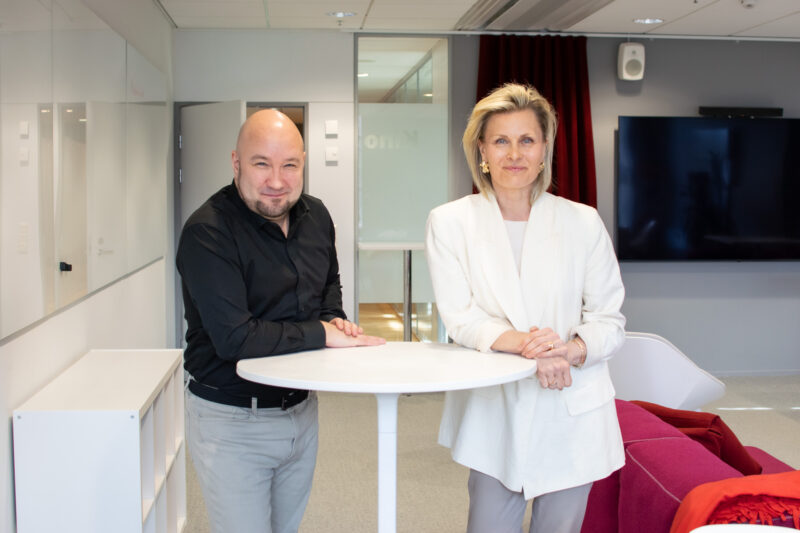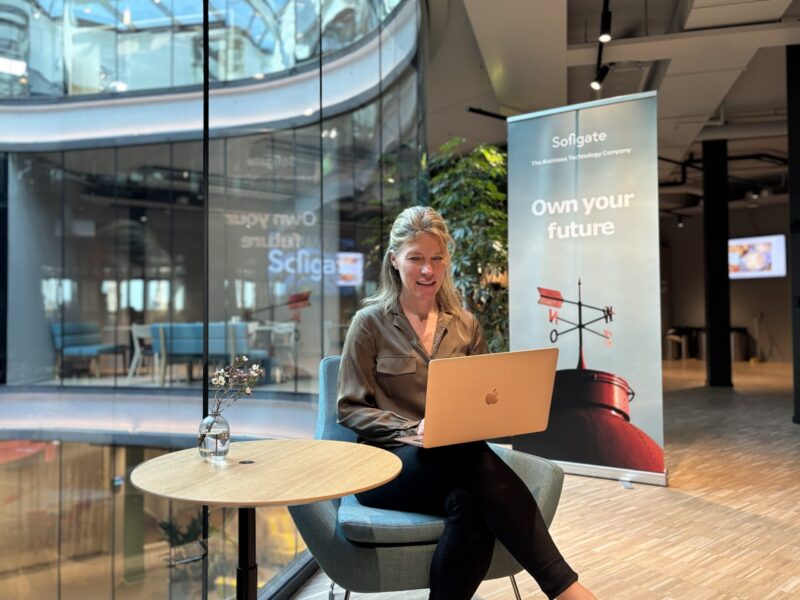Why HR Service Delivery is the foundation to a successful Employee Experience
You might have seen the trends and taglines already: Future of Work, Employee Experience, Employees are the new customers – and so on. Companies and executives are paying attention to employee experience as never before. No wonder, since statistics show that employee engagement is declining, and talents are quitting their jobs at the fastest rate since 2001. (1) By making sure you deliver excellent HR services, you can make sure your company is not among those whose talent is looking to make a swift exit.
An important driver for increased attention on Employee Experience is also the notion that it is highly linked with Customer Experience (CX). Companies now know that their potential to deliver high-quality customer experiences is limited by the quality of their employee experiences.
What is Employee Experience, exactly?
There are numerous definitions of EX. One of the first to define it was author, futurist, and speaker Jacob Morgan.
“I define “employee experience” as an organisation creating a place where people want to show up instead of assuming that people need to show up. This shift from “need” to “want” is the fundamental change that organisations around the world are starting to experience … Every employee experience is comprised of three environments: the physical environment, the cultural environment, and the technological environment (2)”, he wrote in an article for Forbes.
Employee Experience is built in many everyday situations:
- How the new office space is perceived
- How the first day at a new job goes
- When pitching an idea to a manager
- How the 6-month anniversary is celebrated
- When getting assistance with a broken computer
The employees in your organisation strive daily to create value for customers, yet they must often overcome the drag of inefficient processes, policies, and tools. Bad experiences degrade engagement and satisfaction.
Employee services are becoming increasingly complex due to the growing mix of providers, scattered digital landscape with its new services, legacy systems, manual excel forms, and so on. However, any service organisation must aim to hide this rising complexity to remain credible, for one. To do this, HR must own the Employee experience agenda but cannot solve everything themselves. But, what HR can do is boost the employee services they provide and start to think in terms of experiences.
Why is HR Service Delivery important?
We invited Pieter Voskamp, an experienced HR transformation leader, to share his knowledge within the area and how HR can play an important part in how to drive the positive values of EX.
Voskamp emphasizes that HR Service Delivery is the foundation to get to a successful Employee Experience for your organisation. A certain level of maturity in service delivery, governance, and the right type of digital solutions are key building blocks if your organisation wishes to become responsive, focused, and deliver efficiently on your EX strategy. Modern HR Service Delivery also means providing consumer-grade digital employee services, enhancing the statement that being an employee is as valuable as being a customer.
Meeting the employee’s expectations in the workplace also applies to HR services
Voskamp emphasised how digital solutions can positively affect internal efficiency and the way of working within the HR organisation and HR service delivery. Automation features in the ServiceNow platform, such as Virtual Agent and Centralized Employee Documents, are a very good example of how repetitive tasks can be fully or semi-automated. This way, HR agents will have more time to deliver fast and responsive services to employees.
What does the future of HR look like? Our experts share their visions. Download the manifesto now!
The shift in perspective on HR tech is also highly important. Internal efficiency and effectiveness have been driving digitalisation within HR for some time. Now, the rise of employee experience emphasizes the shifting focus to make things easier for employees, the consumers of HR services.
The “outside-in” perspective on HR capabilities is key here. HR technology is no longer just a system that makes HR work more efficiently. It must also be a system of productivity that makes life easier for your employees.
A safe harbor for HR to design and publish digital services
A key component in the digital transformation of HR services is what Voskamp refers to as a “Service Experience layer”. It is a “safe harbor” where HR can design and publish digital services to employees despite the changes of routines and technology that might happen back end.
ServiceNow calls this the “layer of interaction” between HR and HR service users. It is a digital layer where HR can manage their service catalog, case creation, and coordination of tasks, chat with HR or let a chatbot guide them in their interaction with HR. But new experiences do not come by themselves. It is not just a solution implementation or a change of processes! It must be managed properly to reach the intended effects.
How can you achieve a great employee service experience?
To move from scattered employee experiences to a unified high-quality experience, HR organisations need to adopt an EX framework. This way, they can work in a structured way to transform the employee experience and ensure each touchpoint with the employee is up to standards. When doing so, HR can take control of and drive the transformation of the employee service experience.
A well-known quote from the world of customer experience goes:
“The first step in exceeding your customer’s expectations is to know those expectations.”
CX does provide a model for defining and understanding EX. But, a very different type of relationship and value proposition exists between employer and employee than between brand and customer. This very much goes also for Voskamp’s view on how to develop Employee experience.
An important step is to find out what your employees value by defining key Employee Personas and the Moments That Matter most to them. Another powerful component, also commonly used in CX, is journey mapping. From the employees’ perspective, journey mapping is a powerful method that helps both by identifying what’s in their way and how to make experience frictionless.
Once you have defined your most relevant employee personas, mapped their journey and their valuable moments, you can design desired experiences for each touchpoint. This is also where a “Service Experience Layer” makes a huge impact. It is the key digital component that enables a delightful and personalised service experience through multiple channels.
A platform such as ServiceNow also enables you to get uniform data and get insights and learn from your users, the consumers of HR services. Then you have the fundamental building blocks with the ability to develop and be responsive to your employees’ needs on your journey to build a great employee experience.
Key Takeaways:
- Having a vision and knowing your employees’ expectations and ‘Moments that matters’ is key when designing your desired Employee Experience.
- A Service Experience Layer or “layer of interaction” between HR and HR service users is a key component in a successful digitalization journey of HR service delivery.
- New experiences do not come by themselves. It is not just a solution implementation, or a change of processes! It should be managed properly to reach the desired effect.


